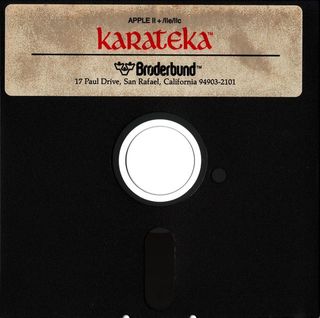Karateka for Apple II
Apple IIGame controls in browser
Show Controller & SystemClick on play Apple II game now button first to load the game and start emulator. Controls:
Karateka
Online version of Karateka for Apple II. Karateka is a 1984 computer game by Jordan Mechner, the creator of Prince of Persia. The game begins with an impressive graphic of the fortress of the evil Akuma. Akuma is holding the lovely Princess Mariko. The player must defeat the guards of the castle and must eventually face Akuma himself in order to rescue the princess. Mechner adeptly used character gestures and musical cues to evoke the game's immersive atmosphere. The animations nearly match the quality of the ones seen in Mechner's Prince of Persia five years later...
Game details
Other platforms online 4
You can play Karateka online also in a versions for74%
rating (36 users voted)
Covers - Box Art
Apple II Computers
Online emulated version of Karateka was originally developed for the Apple ][ (Apple //),
a family of home computers, one of the first highly successful mass-produced microcomputer products, designed primarily by Steve Wozniak,
manufactured by Apple Computer (now Apple Inc.), and launched in 1977 with the original Apple II.
The Apple II became one of several recognizable and successful computers during the 1980s and early 1990s, although this was mainly limited to the US.
Through 1988, a number of models were introduced, with the most popular, the Apple IIe, remaining relatively unchanged into the 1990s.
All the machines in the series, except the //c, shared similar overall design elements. The motherboard held eight expansion slots and an array of RAM sockets
that could hold up to 48 kilobytes. Over the course of the Apple II series' life, an enormous amount of first- and third-party hardware was made available to extend
the capabilities of the machine. The //c was designed as a compact, portable unit, not intended to be disassembled, and could not use most of the expansion hardware
sold for the other machines in the series.
All machines in the Apple II series had a built-in keyboard, with the exception of the IIgs which had a separate keyboard.
Apple IIs had color and high-resolution graphics modes, sound capabilities and a built-in BASIC programming language.










